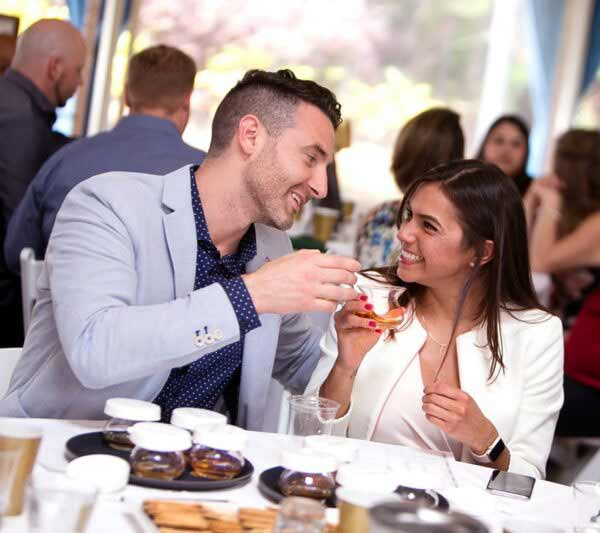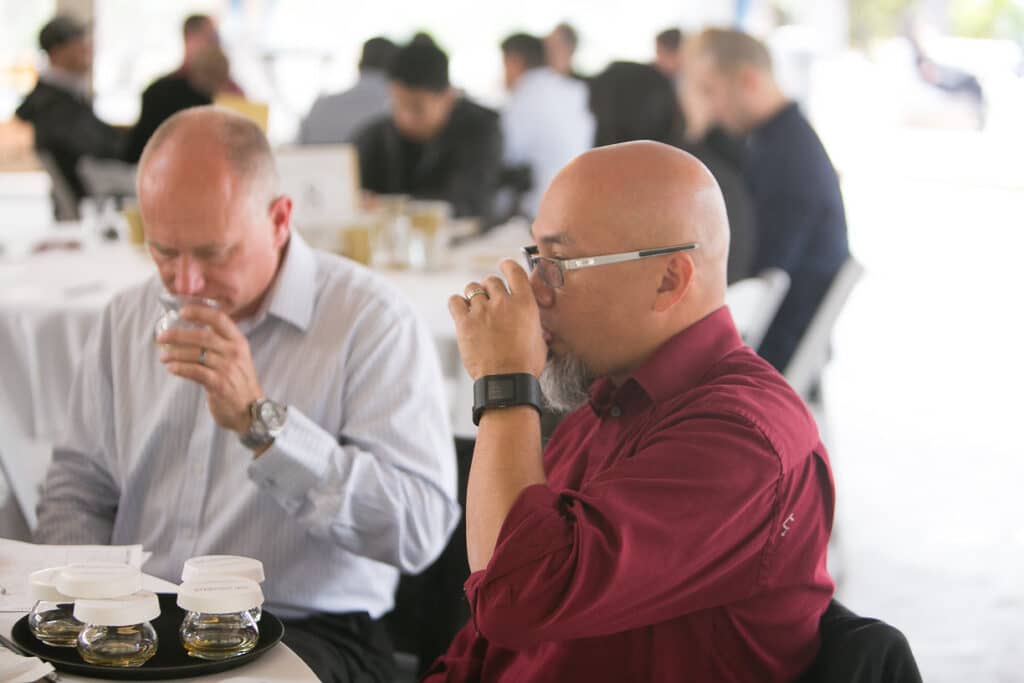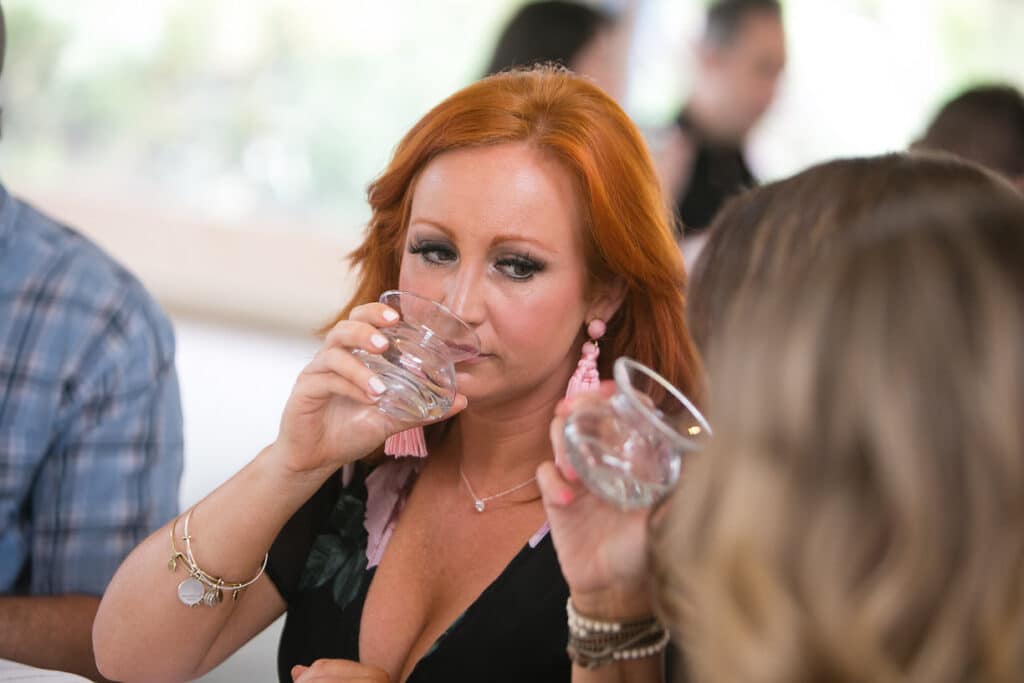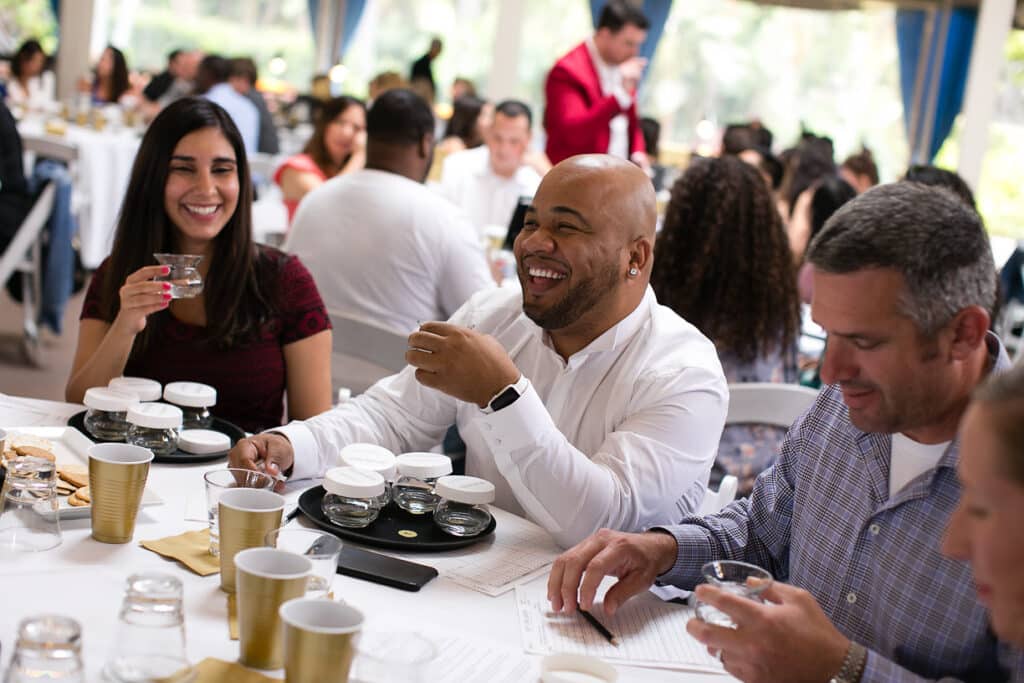
Quest for the Best in Spirits Evaluation
Spirits Drinkers Drink, But Don’t Know Things
George F Manska, CR&D Arsilica, Inc.

Proof or ABV: Proof can denote approximate alcohol content of any spirit although it is commonly associated with whiskey and originated with rum. Sailors came up with two methods to be sure they weren’t being scammed out of the ethanol content of their daily tot o’ rum as ship officers would dilute to stretch stores; (1) add gunpowder and ignite with a magnifying glass or (2) load it into a pistol. If it flamed, or the gun fired (audible explosion), the rum was considered to have enough alcohol to meet the standard and perhaps prevented mutiny. Proof was applied to spirits in England as early as the 16th century to determine taxation rate. By 1816 English are measuring specific gravity of spirits with a hydrometer, 100 proof was 57.15% ABV (alcohol by volume), and those mentally challenged by decimal points decide that 200 proof would be 100% ABV. If 57.15% was 100 proof, wouldn’t 200 proof be 114.30% alcohol? How can anything be over 100% pure? Happy to finally clear that up.
What’s Going On? Most distillers replaced proof with ABV on their labels, and average human sensory is capable of noting differences of roughly 2% in ABV. An error of 14.3%ABV? Proof is obviously not a usable scale of measurement to discuss degrees of human sensory detection. As a result, the accepted Goldilocks (not too hot, not too cold) version of alcohol content for a distillation to be called spirit is 40% ABV but, most importantly, it is not specifically regulated and more a case of general acceptance. Most drinkers do not understand what ABV actually represents. Here is a guide.

Directly from a pot still, the spirit can be 60-80%ABV. Column stills can produce as high as 95% ABV sprits (vodkas e.g.)
Barrel Entry Proof: The alcohol content at which distilled spirits are placed into barrels for aging. The distiller may choose barrel entry proof and may “proof up” their spirit by adding alcohol or “proof down” by adding water to reach the desired ABV.
- Some opt for lower proof for slower aging or to produce lower ABV when bottled.
- Middle Range (around 115-120 Proof / 57.5-60% ABV): A choice that allows for a good interaction between the spirit and the wood, leading to a better-balanced spirit.
- High End (125 Proof / 62.5% ABV): Can lead to a faster aging process, as the higher alcohol content extracts flavors from the wood more quickly. It may result in a more robust and intense spirit.

Storytelling: Compelling narratives of history, heritage, and craftsmanship, creating an emotional connection with consumers, suggesting a rich and authentic backstory
Twisted Marketing Science/Pseudo-Scientific Language: Many brands use complex-sounding scientific terminology to describe manufacturing processes suggests a higher level of sophistication or intellect unsupported by science (e.g., “proprietary molecular aging,” “scientifically crafted.”). As a result, the public is misled.
Cask Strength and Full Proof for aged spirits, both refer to bottling directly from the barrel with no changes or alterations to ABV. Clear spirits such as unaged white dog whiskey, gin, vodka, can be bottled as Full Proof. However, there are a few people out there who mistakenly believe that cask strength is the same as barrel entry. Not true, barrel exit ABV is seldom same as barrel entry ABV.
Age statements: Inform consumers the minimum time the spirit has been aged. Common age statements:
- Single Age Statement: The youngest spirit in the bottle. If a blend of 5-yo and 10-yo, label might say “Aged 5 Years.”
- Minimum Age Statement: Specifies minimum age but may also contain older components. If “Aged at Least 3 Years,” the youngest spirit is 3-yo, but there may be older.
- Blended Age Statement: Label indicates youngest, like “Blended Scotch Whisky Aged 12 Years.” Youngest is 12-yo.
- Vintage Statements: The year the spirit was distilled or bottled. “Vintage 1995” means produced in 1995.
- No Age Statement (NAS): Some opt for “No Age Statement” (NAS).
- Matured For/Finished In: States maturation age or cask finish, “Matured for 2 years, finished in sherry casks.”

What Does it Matter? Try this. Add enough alcohol (95% Ever clear works) to your favorite 40%ABV spirit($50btl.) to make it 53% alcohol. Starting with 1 oz. of 40% My Old Fave, add .31oz of 95% ethanol($37btl.) to get a 53% alcohol spirit. Taste it next to a similar style 53% ($110btl.) with cask strength designation, let someone blind you, and include your favorite 40%. Did you get them right 3 times in a row when someone else chose tasting order? The reverse is done by watering down a cask strength spirit. I will leave the math to you. Also, age may be rarer, but bad stuff happens quickly as barrels age.
Motivations of the average spirits drinker: Most are in search of better, best, rarest, oldest and some want most expensive to flaunt the price tag. Most believe older is better, and higher ABV or cask strength is better, or higher price is better. Their value system revolves around ABV and age statements. Certainly, this shallow approach has nothing to do with spirits quality. Get serious.
Know Things: In summary, stop drinking out of glassware that shoves ethanol up your nose (ethanol is a pungent, distracting anesthetic which numbs the ORNs (olfactory receptor neurons) and prevents your nose from picking up all the subtle aromas. The only reason to drink from tulips is to be like everyone else. It’s the fraternal ID and recognition badge. Knowledge is key; depending on high ABV, and by not cultivating personal taste, you will always be a label buyer, playing one-upmanship, endlessly posting bottles pics you “scored,” buying only what others recommend, continually using “smooth” as your only descriptor, plopping that Blanton’s down at the register with the macho-swagger-half-grin. In addition, desperately trying to gain approval among your peers as a “knowledgeable whiskey drinker” without ever once daring to voice opinion fearing discovery as a wannabee/poser. Be Tyrion Lannister – learn and know things, it improves the experience and empowers you to make better decisions. What everyone else does matters not. Most importantly, what serves you best is the noble quest for knowledge. Know more science by reading this research paper.
Note: Enrolled NEATNEWS subscribers are entitled to 10% discount on all purchases and free
shipping over $55 for as long as you are enrolled. Coupon code: ILUVNEAT
Bio: George F Manska, CR&D, Arsilica, Inc.
Qualifications: Published sensory science researcher, entrepreneur. BSME, NEAT glass co-inventor
Mission: Replace myth and misinformation with scientific truth through consumer education.
